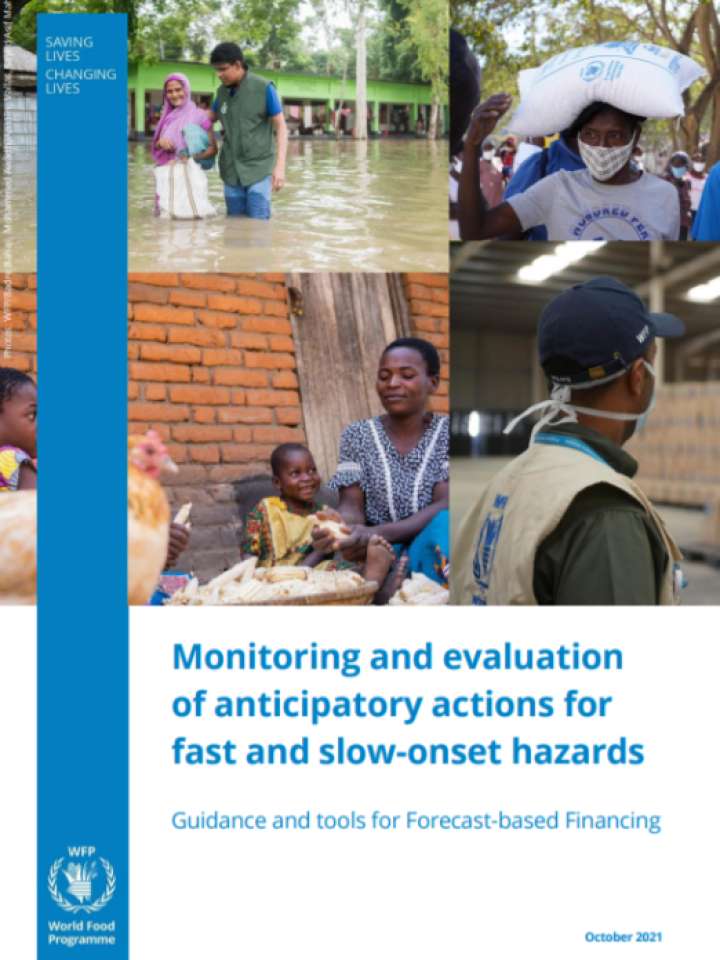Monitoring and evaluation of anticipatory actions for fast and slow-onset hazards
This document seeks to offer practical guidance and examples for monitoring and evaluating anticipatory actions for slow and fast-onset hazards, helping to answer the overarching question of “Does forecast-based financing (FbF) make a difference to reduce or mitigate the impacts on affected populations?”. The primary audience are World Food Program (WFP) Monitoring and Evaluation (M&E) and Programme staff in country offices (COs), although the methods and tools compiled in this guide should be useful to anyone working on M&E of anticipatory action. The forecast-based nature of an FbF programme, the short lead times of fast-onset hazards and the complexity of drought contexts imply several particularities for M&E that are considered in this guide.
This document focuses on the particular M&E challenges posed by anticipatory action for slow and fast-onset hazards, instead of aiming to be an exhaustive programme or project M&E manual – which would require repeating existing guidance available elsewhere. It does not prescribe a particular approach or method, but flags key issues, provides perspectives for consideration and points to useful resources and further reading to allow FbF teams to make informed decisions about how to set up their M&E.
Explore further
